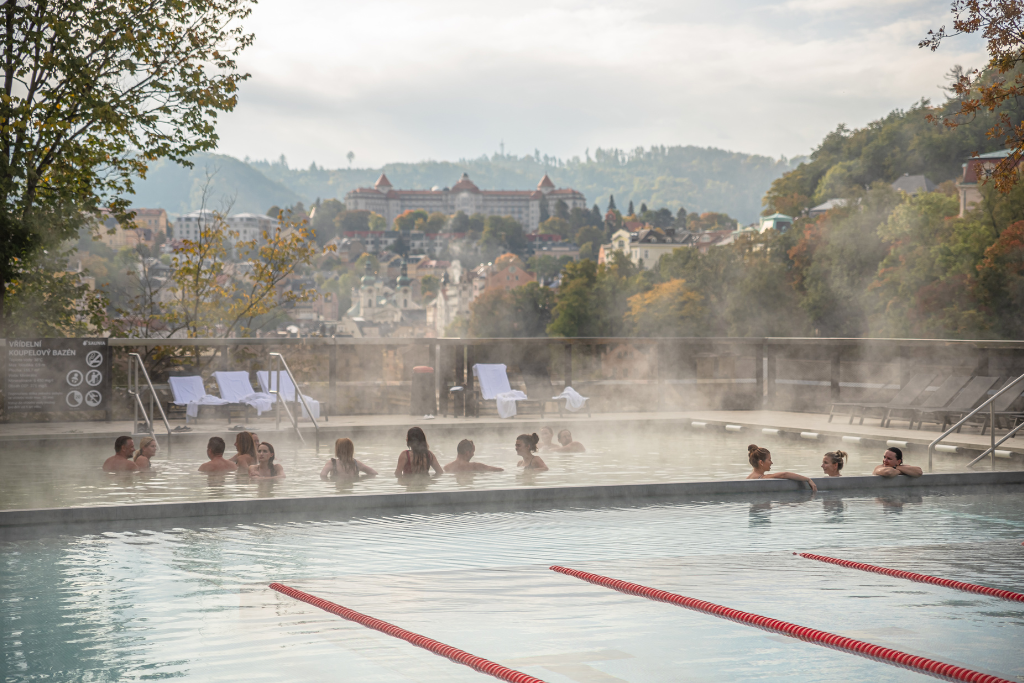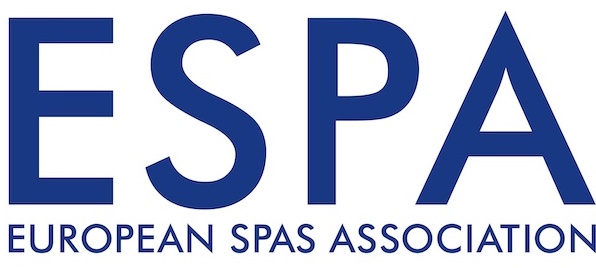Natural curative resources in the Czech Republic are:
- Mineral waters (including thermal waters)
- Gases (s.c. spring gases, usually accompanying mineral waters in volcanic-active areas)
- Peloids, i.e. inorganic bogs (peat bogs, swamps etc.)
- Climatic conditions of a locality.
There are 36 spa localities in the Czech Republic, ranging from world-known spas like Karlovy Vary, Mariánské Lázně, and Jáchymov to very small health resorts like Vráž, Bohdaneč, Klimkovice etc. Most of these health resorts are based on so-called natural curative resources but 6 of them are based just on the climatic conditions of their areas – climatotherapy spas like Jeseník, Karlova Studánka, Kynžvart, Mariánské Lázně etc.
Mineral Water Criteria
By Czech law, natural healing mineral water is water from springs or wells containing significant inorganic matter:
- Total dissolved solids > 1000 mg.l-1 or
- Dissolved CO2 (>1000 mg.l-1) or
- Temperature (>20°C) or
- Radioactivity (>1 500 Bq.l-1) or
- Content of some important particles e.g. H2S (2 mg.l-1 of S), Fe, As, I, F, H2SiO3 (70 mg.l-1) etc.
Thermal springs of Karlovy Vary/Carlsbad
In Karlovy Vary, thermal water has been springing from the bottom of the Teplá River’s narrow valley since time immemorial. Traditions of the Karlsbad spa business, more than 600 years old, have based on the medicinal strengths of the springs.

The area of spa town Karlsbad belongs to the Ore Mountains geological region in the western part of Bohemian Massif. From the hydrogeological point of view, the thermal springs of Karlsbad are associated with the s.c. Rosiwal spring zone, is a very special tectonic zone with a length of about 1700 m and a width of 150 m, extending in the direction NNW-SSE, with an inclination of 70° to 80° to SW. The outflows of thermal springs (as a mechanical mixture of hot water and gas, in the ratio of 1 : 3, the effect of supersaturation) are determinate with the crossing of the Rosiwal zone with other tectonic faults in the prevailing E-W and N-S directions. The tectonic disturbance of granite massif dates from the Variscan orogeny and revived during the Saxonian time. The depth of the origin of thermal water is estimated to be 2 – 3 km.
It is not only the temperature and gas distribution that features in the Karlsbad springs, it is also the unique and extremely favourable chemical composition. The origin of all springs is alike, therefore, the chemical and overall mineralization of each of them is analogous. The composition of the water is well-known since the 18th Century (Becher, 1772); it is a Na-HCO3-SO4-Cl type, with 6,5 to 6,8 g/l of dissolved mineral salts, with the temperature depending on the distance from the centre of ascend zone of the structure, 73,4° (as a maximum) to 39°C, with an exception of the border areas to the south and to the north, too. The thermal mineral water gushing rate is 2 000 l/min, which is an amount sufficient to supply all the spa treatment facilities and the famous fountain itself. So-called small Karlsbad springs are only natural offshoots turning from the main stem close to the surface ground. Very interesting is the different content of trace elements (Cu, Zn, Pb, Ag, As, V, Li, F etc.) with pharmacodynamical effects in each of the springs. Consequently, the physical and chemical characteristics of each of them are different, and the spa physicians are thus given a chance to mark out the drinking cure for individual patients as appropriate and with a view of the nature of their disease.

The protection of Karlsbad Springs has had a long history since 1761 when the State Mining Bureau in the area of Karlsbad against coal mining made the first protection restrictions.
Unique healing Carlsbad mineral water affects locally on the lining of the digestive tube, increased digestive enzymes activity, and has a neutralizing effect on the normalization of gastric and intestine peristalsis, effect of choleretic and cholekinetic stimulation, stimulation of pancreatic juice, very important is the improvement of glucose utilization on the periphery of the body and decreased insulin resistance.
It is mainly used as a drinking cure for metabolic diseases such as diabetes mellitus, obesity, hyperuricemia, fatty metabolism disorders and gastroenterological diseases such as oesophagal, stomach, intestines inflammations, and fatty liver. One of the last monitoring of the Institute of Spa and Balneology v.v.i. in terms of EBM is the study of the positive effect on the stiffening of the liver after 3 weeks of drinking cure.

